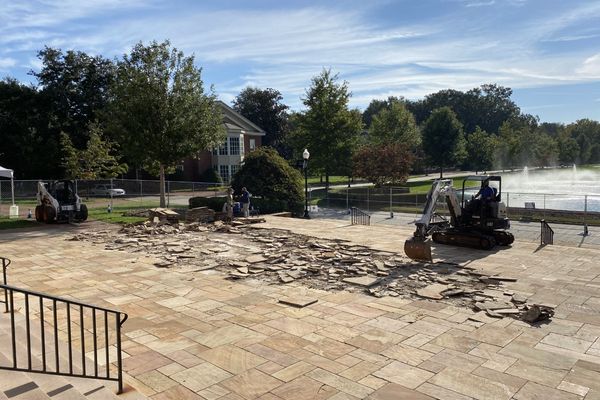In the fall of 1965, Furman University made an enormous step in the name of racial progress and inclusion by admitting its first Black student on campus, Joseph Vaughn. This was a pivotal moment in Furman’s history and especially notable considering that the first president of Furman University, James C. Furman, owned 56 enslaved persons and was a vocal advocate of slavery.
Last week, the University broke ground on the Joseph Vaughn plaza and statue in front of James B. Duke library. The location of the statue commemorates a famous photo of Vaughn making history as he bravely took some of his first steps on campus.

The Vaughn statue is especially significant since his presence on campus in 1965 went against the racist values and beliefs of Furman’s founders and leaders. Those values have influenced Furman throughout its history, with trickle-down effects on the Furman community we see today. This includes a dissapointing lack of diversity. Still today, 55 years after Vaughn desegregated the school, only 7% of the student population is black.
Despite its troubled history and continued struggles with diversity and inclusion, the Vaughn statue is only the latest initiative on campus to confront Furman’s past and propel the University into a more diverse, equitable, and inclusive future. From the Seeking Abaraham Task Force on Slavery and Injustice to the renaming of James C. Furman hall, the Vaughn statue does not stand alone in Furman’s fight for racial justice. That does not, however, take away from the significance of this project. Erecting the Joseph Vaughn statue is a monumental step in the long process of reconciliation.
The statue’s central location on campus will help it serve as a constant reminder to community members about the progress we have made as an institution. Additionally, it will also force reflection about Furman’s troubled past and the barriers that students of color continue to face to this day. Perhaps most importantly, however, the plaza will mean so much to many Black students, showing them that a great education is right at their fingertips and that anything is possible.
In sum, the Vaughn statue is bound to have far-reaching impacts on campus. Ultimately, when we look at the plaza, we can see that Furman is serious about its efforts toward diversity and inclusion. We can see the past—the good, the bad, and the ugly—and we can imagine the possibilities for continued progress in the future.
